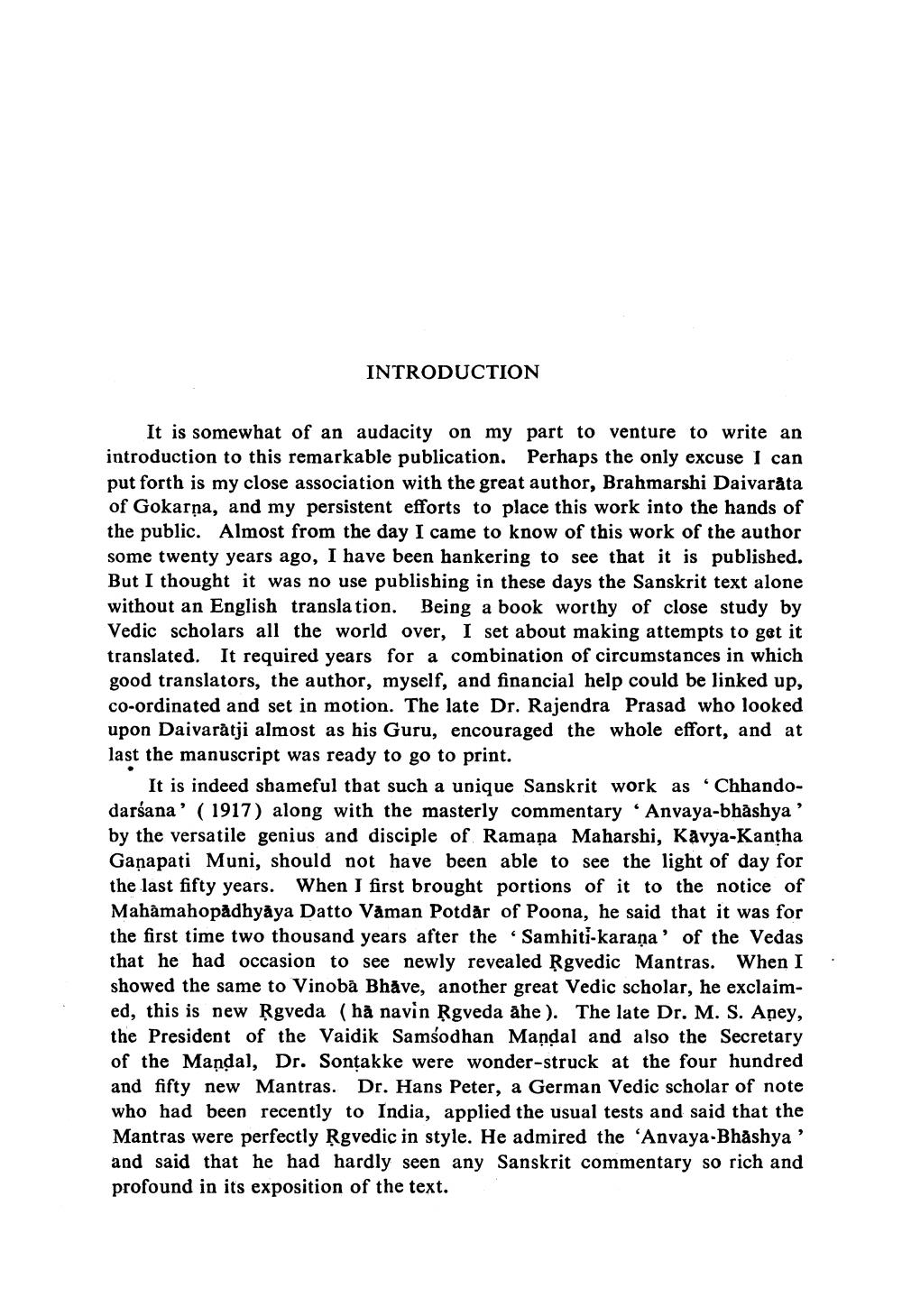________________
INTRODUCTION
It is somewhat of an audacity on my part to venture to write an introduction to this remarkable publication. Perhaps the only excuse I can put forth is my close association with the great author, Brahmarshi Daivarăta of Gokarna, and my persistent efforts to place this work into the hands of the public. Almost from the day I came to know of this work of the author some twenty years ago, I have been hankering to see that it is published. But I thought it was no use publishing in these days the Sanskrit text alone without an English translation. Being a book worthy of close study by Vedic scholars all the world over, I set about making attempts to get it translated. It required years for a combination of circumstances in which good translators, the author, myself, and financial help could be linked up, co-ordinated and set in motion. The late Dr. Rajendra Prasad who looked upon Daivarătji almost as his Guru, encouraged the whole effort, and at last the manuscript was ready to go to print.
6
It is indeed shameful that such a unique Sanskrit work as 'Chhandodarśana' (1917) along with the masterly commentary Anvaya-bhashya by the versatile genius and disciple of Ramana Maharshi, Kavya-Kantha Ganapati Muni, should not have been able to see the light of day for the last fifty years. When I first brought portions of it to the notice of Mahamahopadhyaya Datto Vaman Potdar of Poona, he said that it was for the first time two thousand years after the Samhiti-karaṇa' of the Vedas that he had occasion to see newly revealed Rgvedic Mantras. When I showed the same to Vinoba Bhāve, another great Vedic scholar, he exclaimed, this is new Rgveda (hà navin Ṛgveda ahe). The late Dr. M. S. Aney, the President of the Vaidik Samsodhan Mandal and also the Secretary of the Mandal, Dr. Sonṭakke were wonder-struck at the four hundred and fifty new Mantras. Dr. Hans Peter, a German Vedic scholar of note who had been recently to India, applied the usual tests and said that the Mantras were perfectly Ṛgvedic in style. He admired the 'Anvaya-Bhashya' and said that he had hardly seen any Sanskrit commentary so rich and profound in its exposition of the text.




